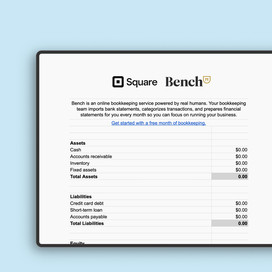Table of contents
This article is for educational purposes and does not constitute legal, financial, or tax advice. For specific advice applicable to your business, please contact a professional.
Budgeting methods and tools can help you keep track of where your money is going and help you make decisions to help you meet your business’s financial goals. According to a recent survey by accounting firm Clutch, 50% of businesses surveyed did not have a formally documented budget in 2020. Of businesses surveyed, the smaller the business, the less likely they were to have a budget. Those that did create a budget usually stuck to it, with 43% reporting they spent about what they had budgeted for and an additional 19% reporting they spent less than they had budgeted for.
Types of budgeting methods
Activity-based budgeting
Activity-based budgeting records and tracks all costs related to the business. After identifying activities that create costs for the business, they are recorded, analyzed, and then inform how the budget will be spent. This type of budgeting follows a top-down approach, meaning that a budget is set and how funds are allocated is determined from there. For example, if the budget allocates a certain amount to one department, that department must determine how best to spend that exact amount of money.
One of the goals of activity-based budgeting is to keep costs as low as possible. Rather than adjusting a budget for inflation or basing it on a previous year’s budget, this method is focused on efficiencies and maximizing opportunities. This is considered more rigorous than a traditional budget and is often employed by new businesses or ones undergoing large changes.
Incremental budgeting
Incremental budgeting is a process where a budget is created by iterating on the budget used in the year prior. This method takes the last full year’s budget and adds or subtract a percentage to plan for the current year’s budget and goals.
This method does not take into account line-by-line costs or in-depth analysis, which can mean opportunities to cut costs are missed. However, this more streamlined and simple budget style can be a good fit for businesses that have very little change year over year. Any changes to the budget are easier to spot using incremental budgeting. They are commonly used by educational institutions as well as other large organizations.
Value proposition budgeting
Value proposition budgeting, also known as priority-based budgeting, focuses on the value of every item on an expenditure list. Expense management-software maker Divvy suggests asking yourself these four questions when creating a budget using the value proposition budgeting method:
- Why is this amount included in the budget?
- Why are we spending this money?
- Does the item create value for customers, staff, or other stakeholders?
- Does the value of the item outweigh its cost?
This budgeting method strives for identifying value and highlighting opportunities to cut expenditures that are not value drivers for a business.
Zero-based budgeting
The zero-based budgeting method was pioneered by former Texas Instruments account manager Peter Pyhrr in the 1960s. Unlike more traditional budgeting methods of the time, each year’s budget starts from scratch rather than making an increase or decrease based on prior years.
Using this budgeting method, you allocate all of your money to expenses, savings, and debt payments. This budget method sets aside money for specific functional areas of the business. This can help lower costs by knowing the intended purpose for money spent. The goal of this budget is for your income minus all your expenses to equal zero. If you’re considering a zero-based budget for your business, Gartner recommends these five prerequisite steps before getting started.
Some budgeting tools to consider
Creating a budget yourself can be a great way to get a quick lay of the land when it comes to your business, but as your business scales you may want to consider some additional tools to maintain and manage your budget.
- Use budgeting software: Budgeting software can help you track and manage your business’s budget. QuickBooks, Hurdlr, Xero, and Zoho Books are among many companies that can help you manage your budget, and they also integrate with Square.
- Check your Square Dashboard: If you use Square, take a look at your Square Dashboard. Here you will find analytics and reports to pull that you can use to better inform your budget planning process.
- Consider hiring a professional: There is a range of professionals you might engage to help you create and manage budgets, from accountants to budget analysts. As your business grows in size and complexity, you may want to work with a financial professional to help you plan ahead for your business.
These are a few of the many budgeting tools and methods businesses use to better manage cash flow.
![]()












